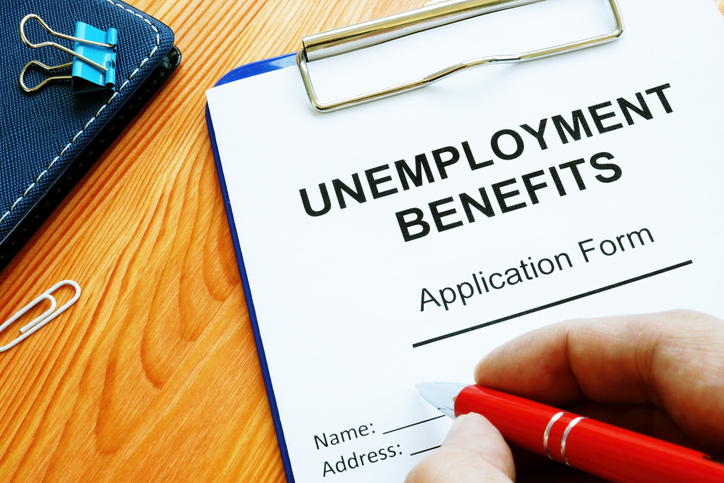COBRA, which gets its name from The Consolidated Omnibus Budget Reconciliation Act, requires health plans maintained by employers with 20 or more employees to continue to offer the same healthcare coverage to qualified employees, spouses and dependent children for up to 18 months (or longer in some cases). Both full and part-time employees are counted to determine whether a plan must offer COBRA benefits.1 Coverage that can be continued include medical, dental vision, Employee Assistance Programs and, in some circumstances, health Flexible Spending Accounts.
How Do You Sign Up for COBRA?
If you qualify for continuing coverage under COBRA, in most cases your employer must notify your health plan within 30 days of the event. The event can include the end of employment, a reduction in hours, the death of the employee or the beneficiary becomes eligible for Medicare. Then your health plan must send you a COBRA election notice within 14 days, including an application for coverage, cost information and deadlines.
In cases of divorce, separation or a child’s loss of dependent status, it is up to the covered employee or other qualifying beneficiary to notify the plan about COBRA eligibility. How long you have to notify the plan varies, but under the COBRA rules it can be no less than 60 days.2
If you have not heard anything from your health plan and you think you or a family member qualify for COBRA, call your former employer’s benefits department as soon as possible to make sure the plan has been notified.
What You Need to Know
COBRA provides continuing coverage for people who have lost employer-sponsored health insurance.
COBRA can be expensive. You’ll likely pay the full premium cost, including the portion your employer previously paid for.
Most people who sign up for COBRA are eligible for benefits for 18 months.
Leaving a job often means losing employer-sponsored health insurance. COBRA is one alternative for continuing your coverage.
Who Can Get COBRA?
COBRA is available to “qualified beneficiaries” – that is, employees covered by a group health plan on the day before a “qualifying event” occurred, or that employee’s spouse, former spouse or dependent child. Each beneficiary may sign up seperately.
In some cases people other than employees, such as agents, independent contractors and directors, may also be qualified beneficiaries.3
Qualifying events4 for employees include termination of employment for any reason other than “gross misconduct,” or a reduction in hours of employment that makes you no longer eligible for group health insurance through your employer.
Spouses and dependents may experience a qualifying event if:
- The covered employee loses their job for any reason other than “gross misconduct”
- The covered employee undergoes a reduction in hours
- The covered employee becomes entitled to Medicare
- Divorce or legal separation from the covered employee occurs
- The covered employee dies
- A child loses dependent child status – meaning the dependent child on the plan has reached age 26, the maximum allowed for coverage under a parents’ group health plan.
How Much Will You Pay for COBRA?
COBRA is expensive. You’ll be paying the full premium cost, including the portion of the premium your employer previously paid for you. Considering the average employer pays about 80% of the $7,188 average annual premium for individuals, you’ll likely see a dramatic increase in premium costs, according to data from the Kaiser Family Foundation.5
You can’t be charged more than 102 percent of the cost of the plan. (In cases of disability the extension charge may be 150% of costs.)You’ll make payments directly to the health insurance company or COBRA plan administrator.
In some cases, the employer may choose to pay some or all of COBRA premiums. This may happen if your employer is undergoing a merger or acquisition, has furloughed you, or is offering severance o. In these cases, the employer may pay the health plan directly or reimburse employees for their payments.6
What Are COBRA Deadlines?
Once the plan has been notified of a qualifying event, the plan must provide qualified beneficiaries with an election notice within 14 days. The notice will include your deadline for signing up. Keep in mind that you must sign up for COBRA during a specific time frame and COBRA bills must be paid on time or you risk losing coverage. Here’s how it works.
You have 60 days to sign up for COBRA once it’s offered to you. Coverage is retroactive from the day after you became unemployed. Then, after you elect COBRA, you have 45 days to make your first premium payment. If you do not make the first payment in that time frame, the health plan can terminate your benefits.
Highlights
You have 60 days to sign up for COBRA once it’s offered to you.
You’ll learn from the plan what day monthly payments after the initial payment are due. You have a 30-day grace period. If you miss that grace period, your plan can cancel your coverage.
You can use tax advantaged funds from a Health Savings Account to pay COBRA premiums.7
How Long Are COBRA Benefits?
In the majority of cases, COBRA continuing coverage lasts 18 months after you become unemployed. There are some longer periods of coverage for special beneficiaries. Coverage may continue for a total of 29 months in the case of a disability. And non-employee qualified beneficiaries, such as spouses and dependents, may be eligible to continue coverage for a total of up to 36 months if there is a second qualifying event.8
COBRA is an important alternative for people who have lost employer-sponsored insurance, especially those beneficiaries with an ongoing health issue or those who want to keep their current healthcare providers. Knowing how COBRA works can help you evaluate your options.
Next Steps
For more information about COBRA contact your employee benefits department, or your nearest Regional or District office of the U.S. Department of Labor’s Employee Benefits Security Administration in your area. You can find the office near you through the EBSA website.

